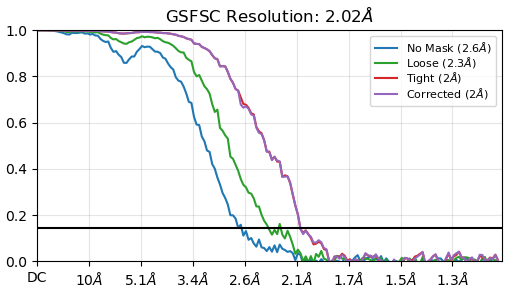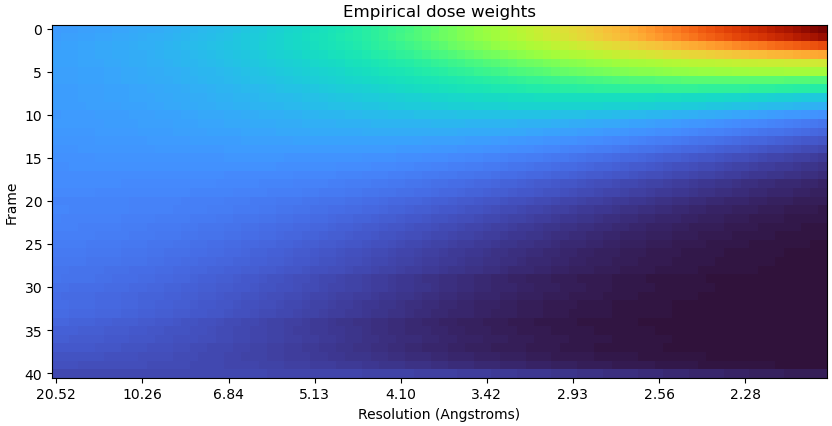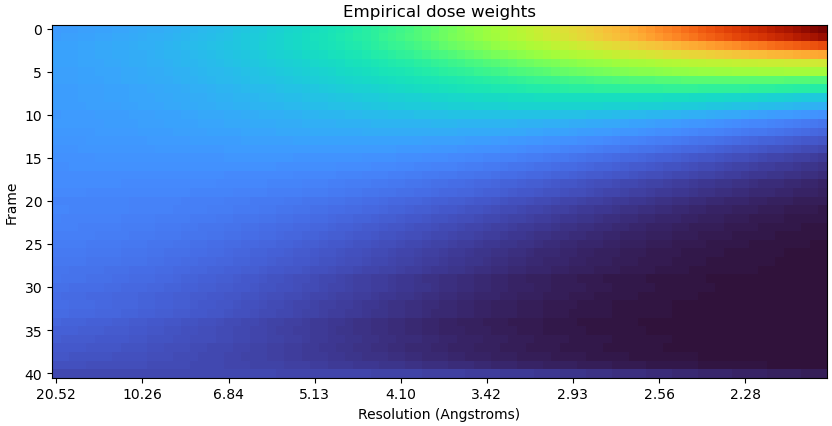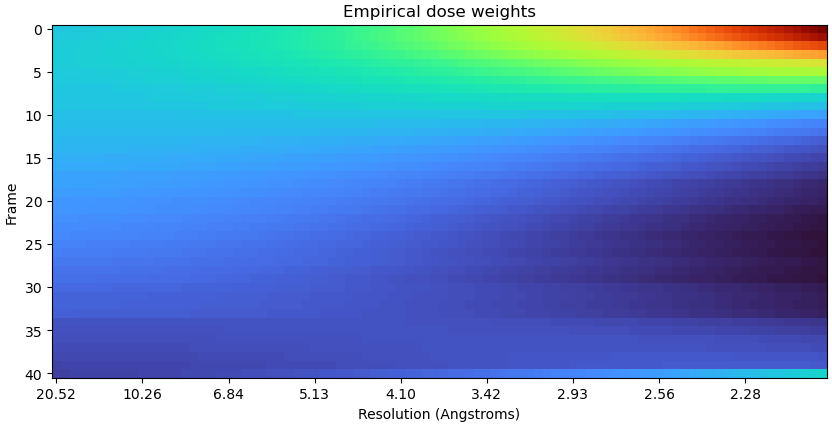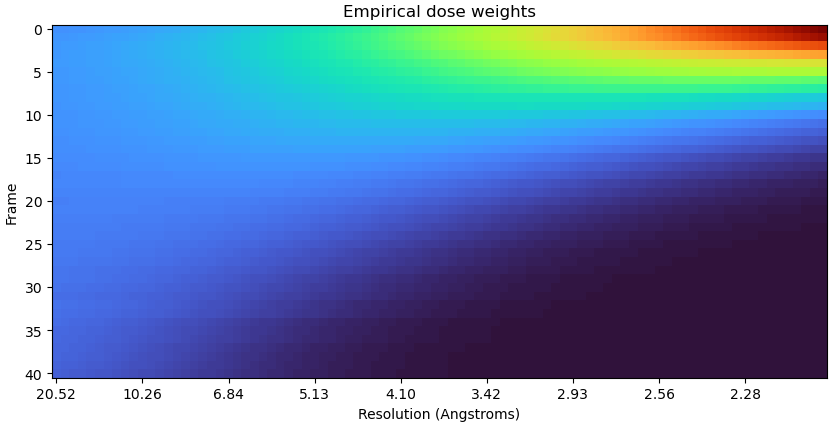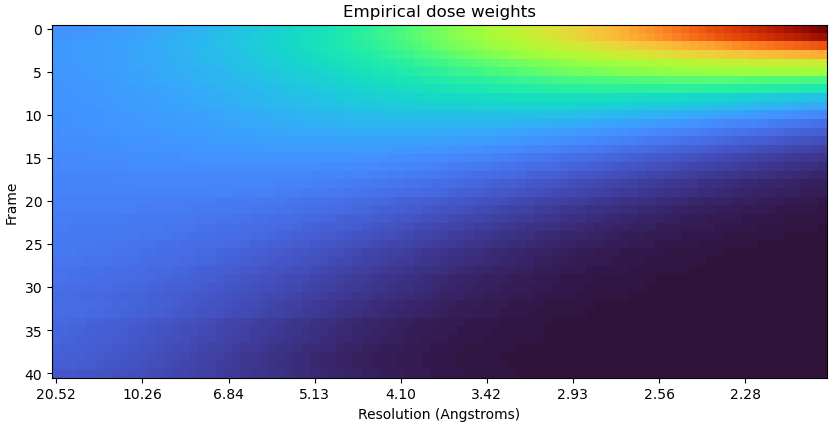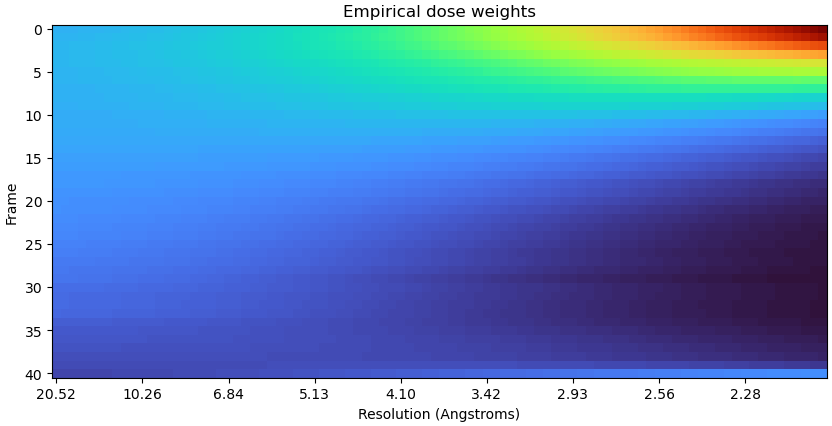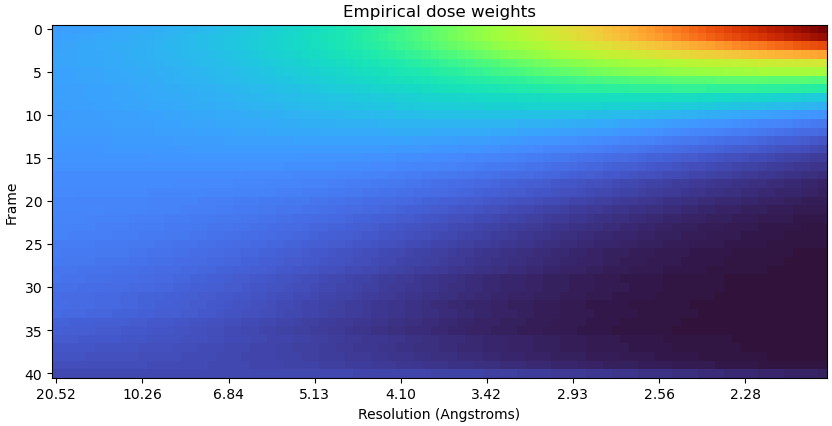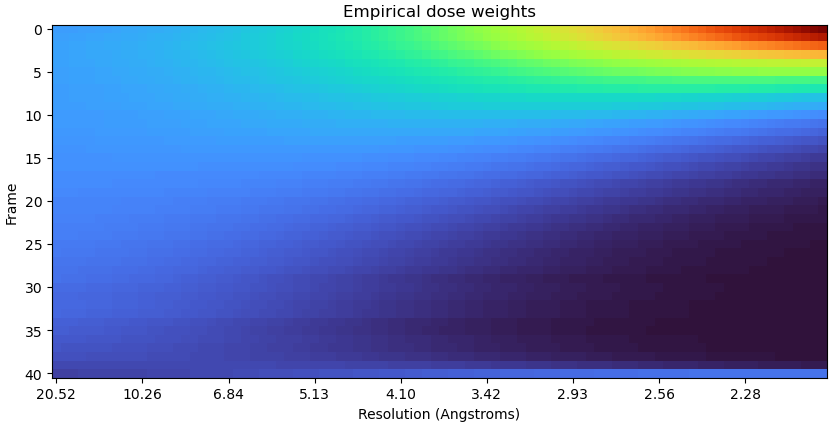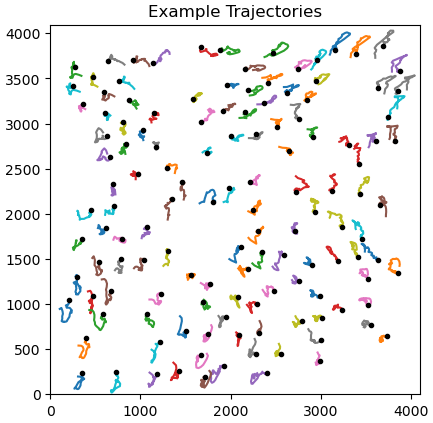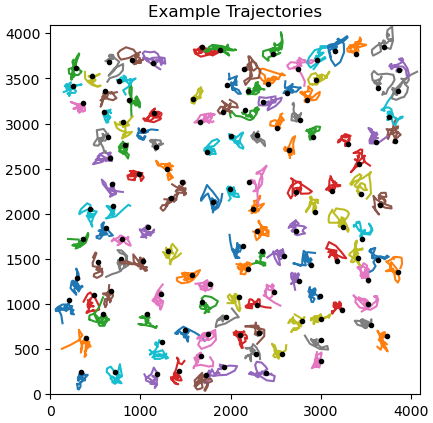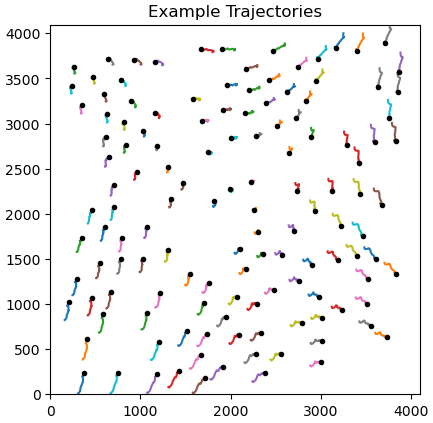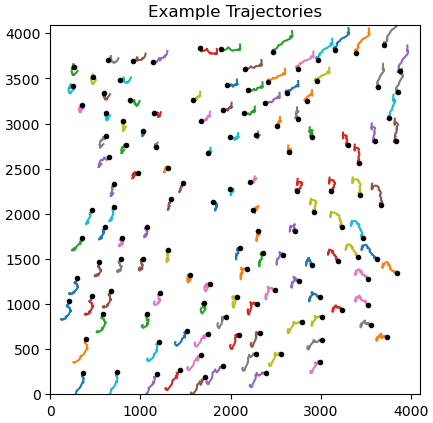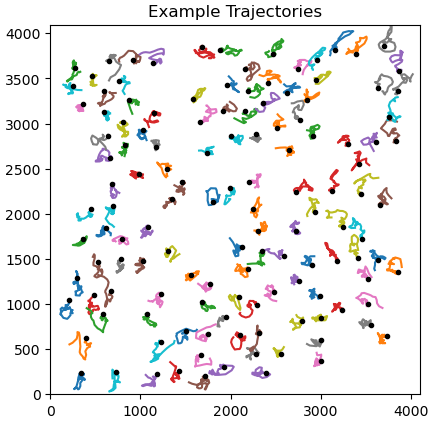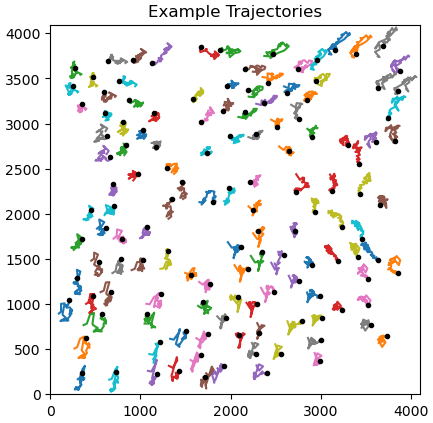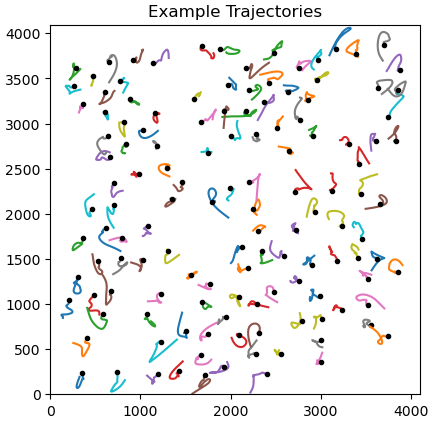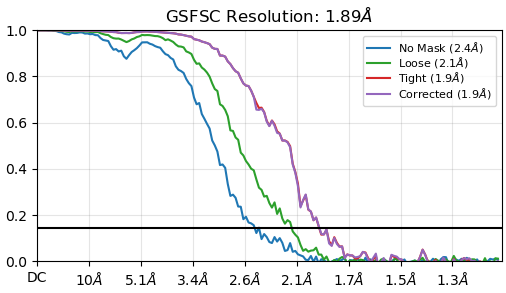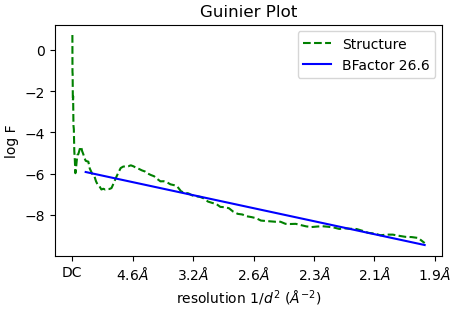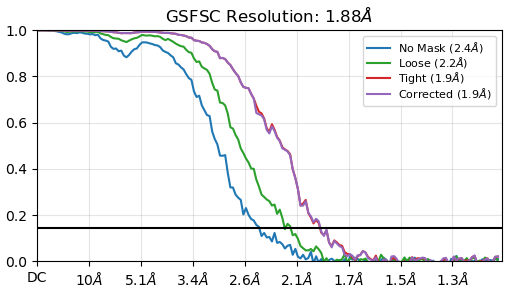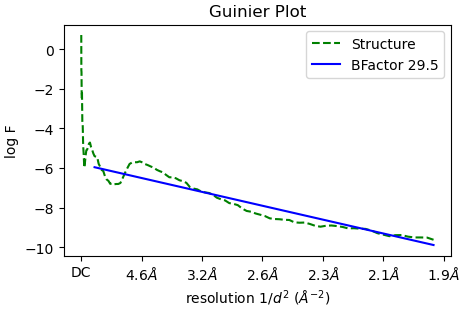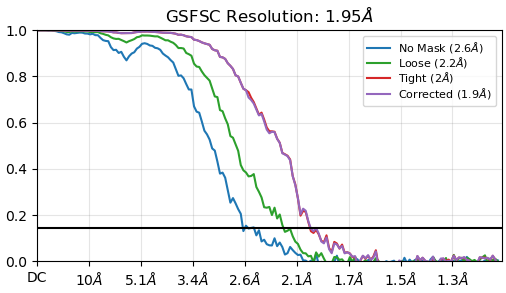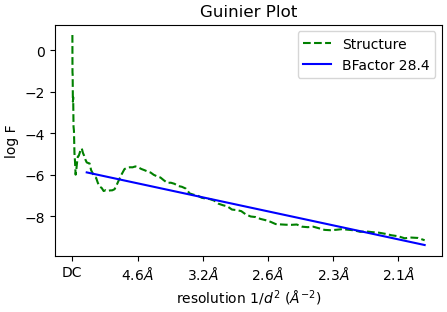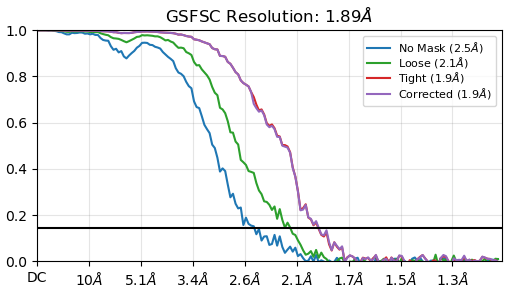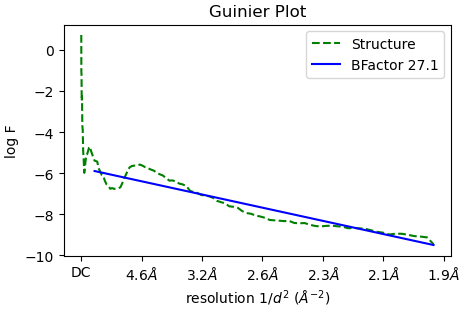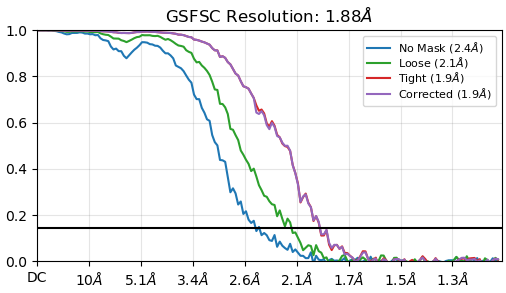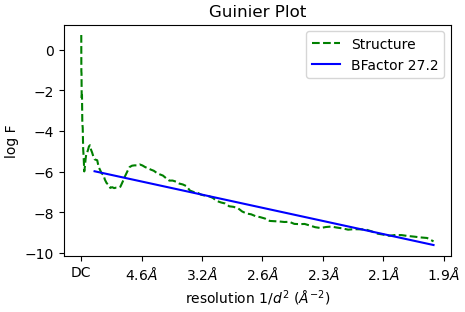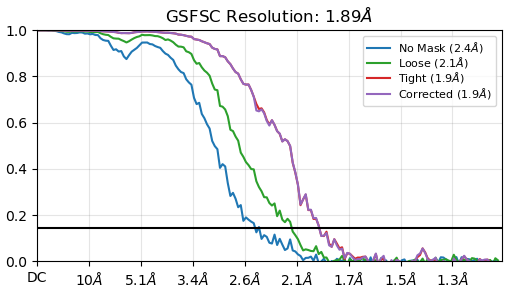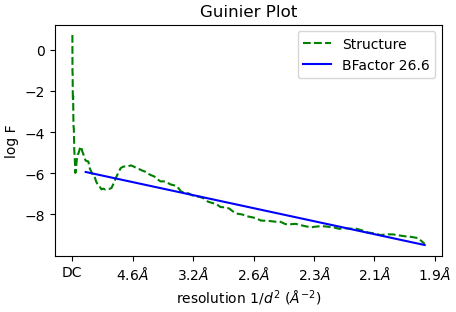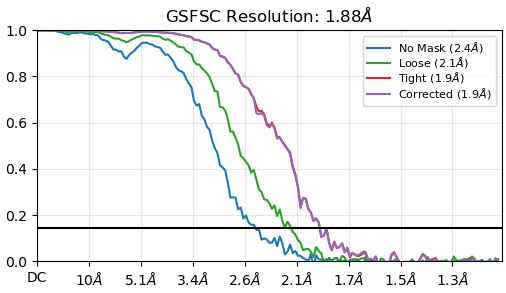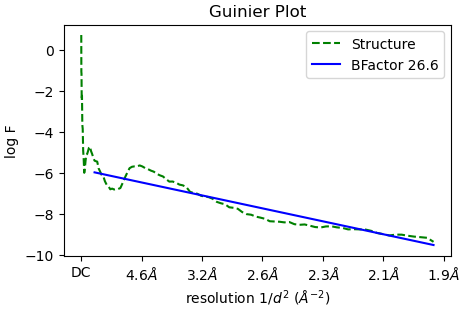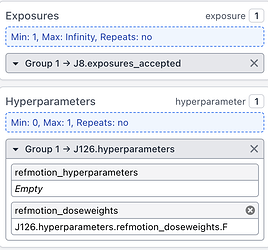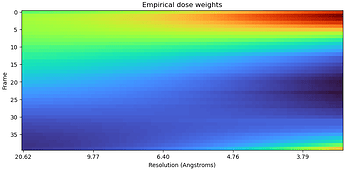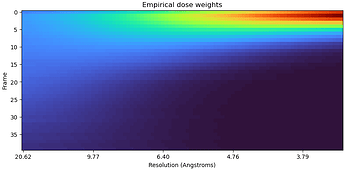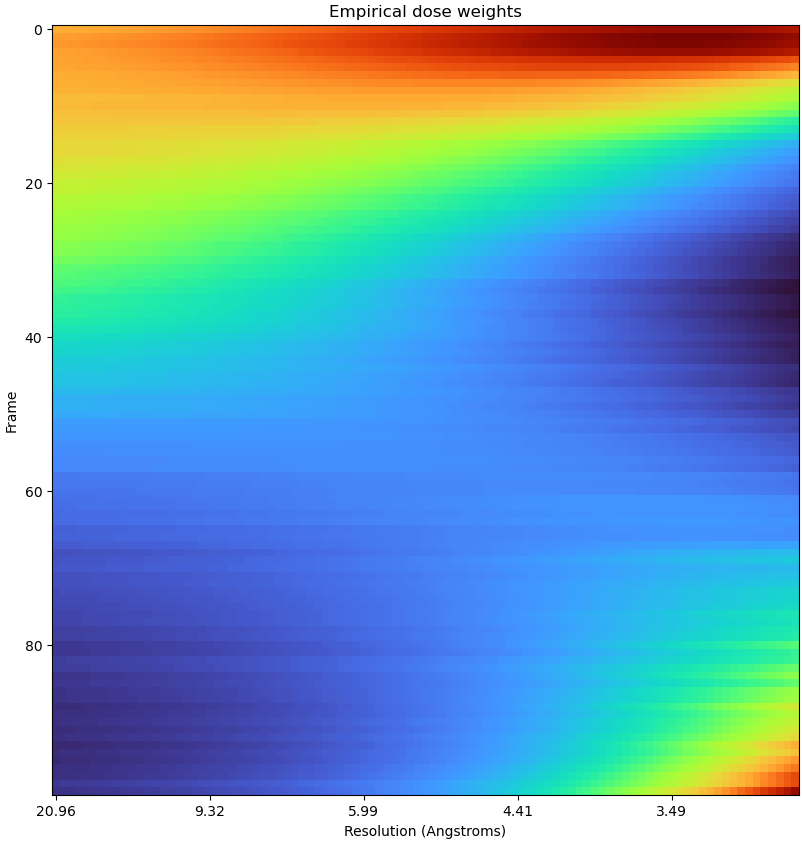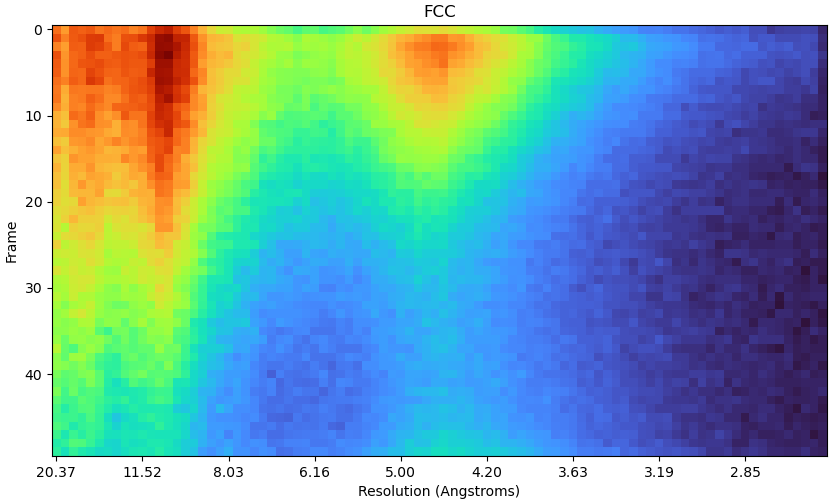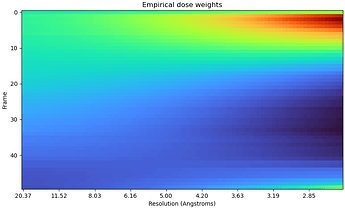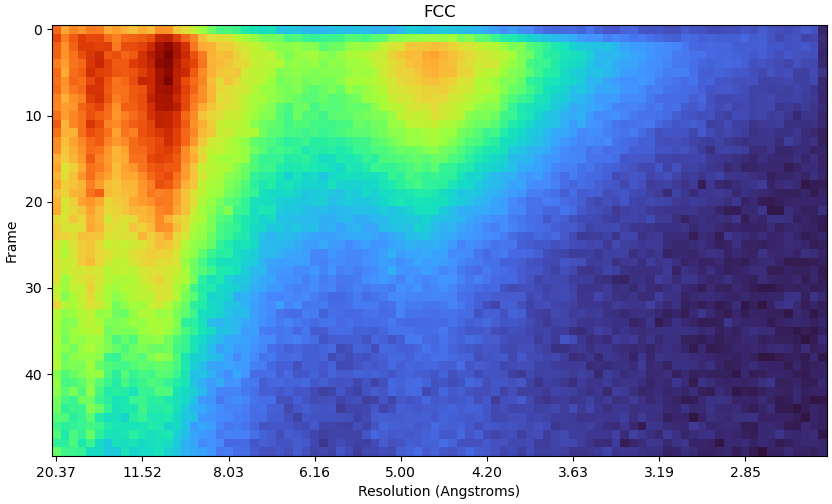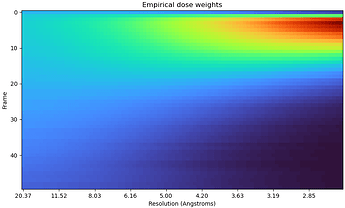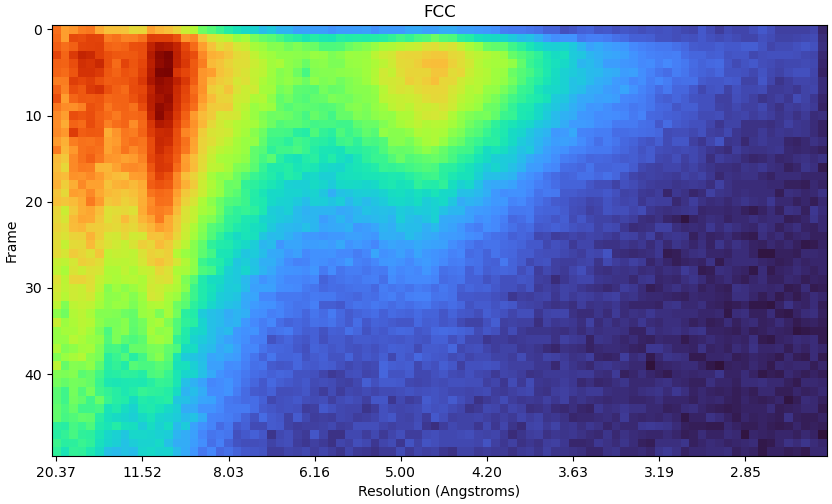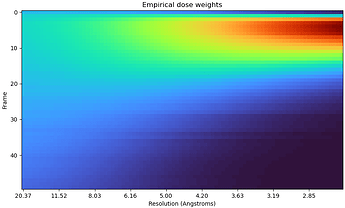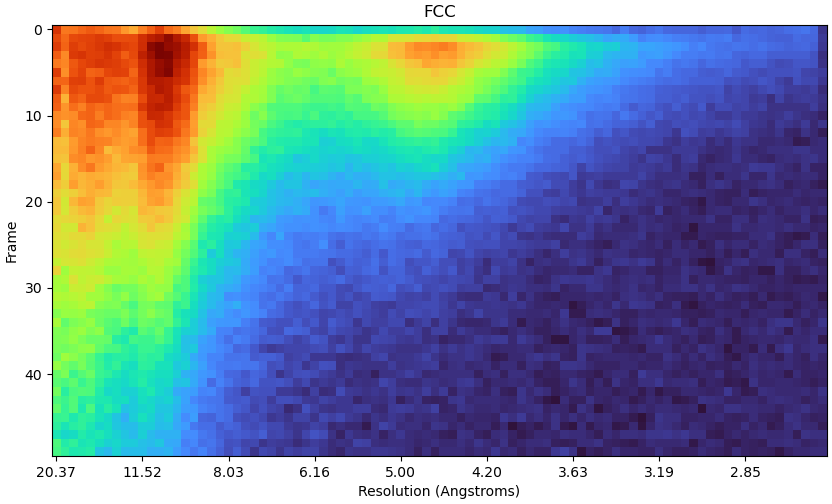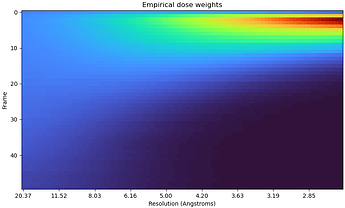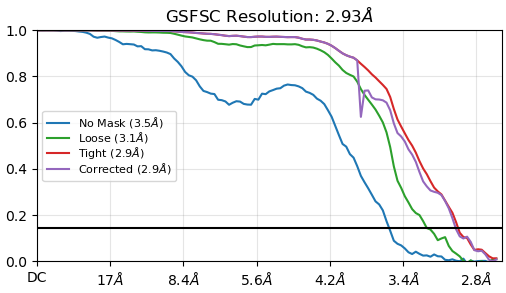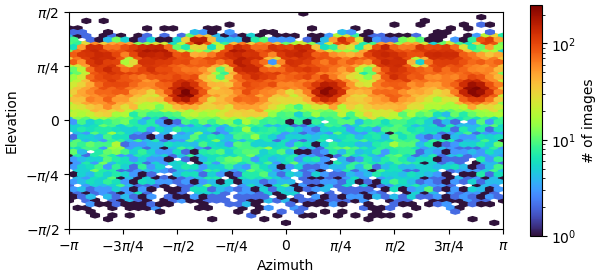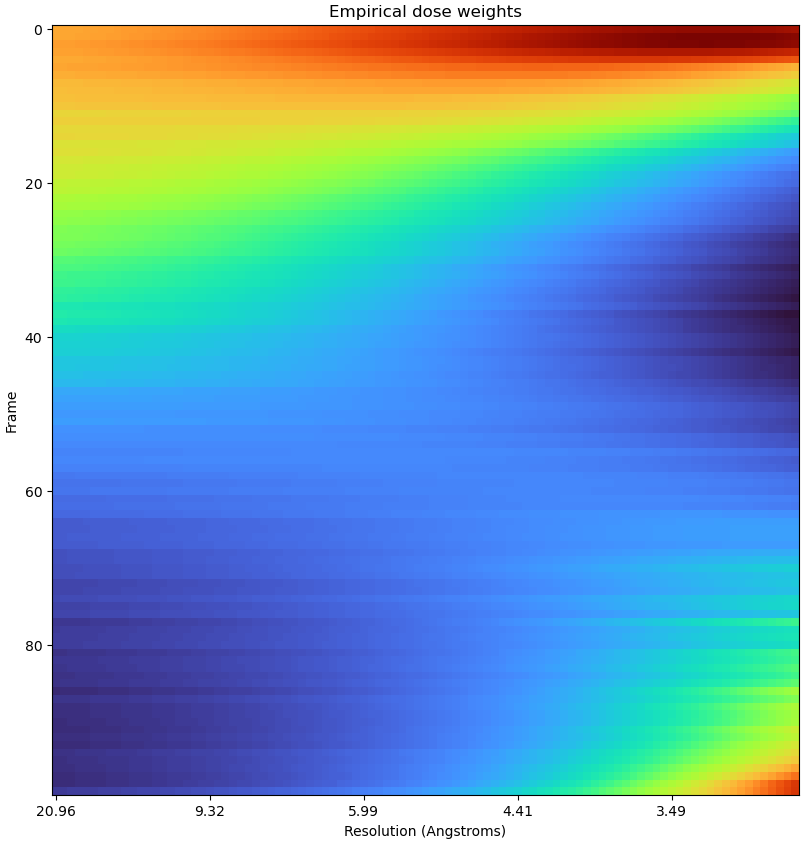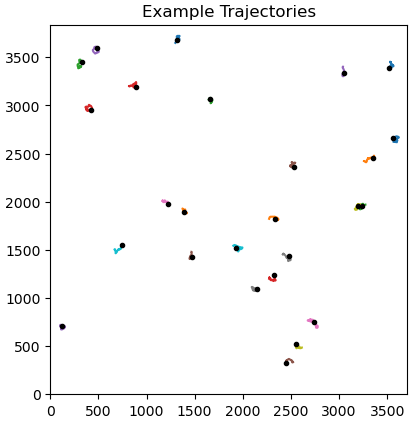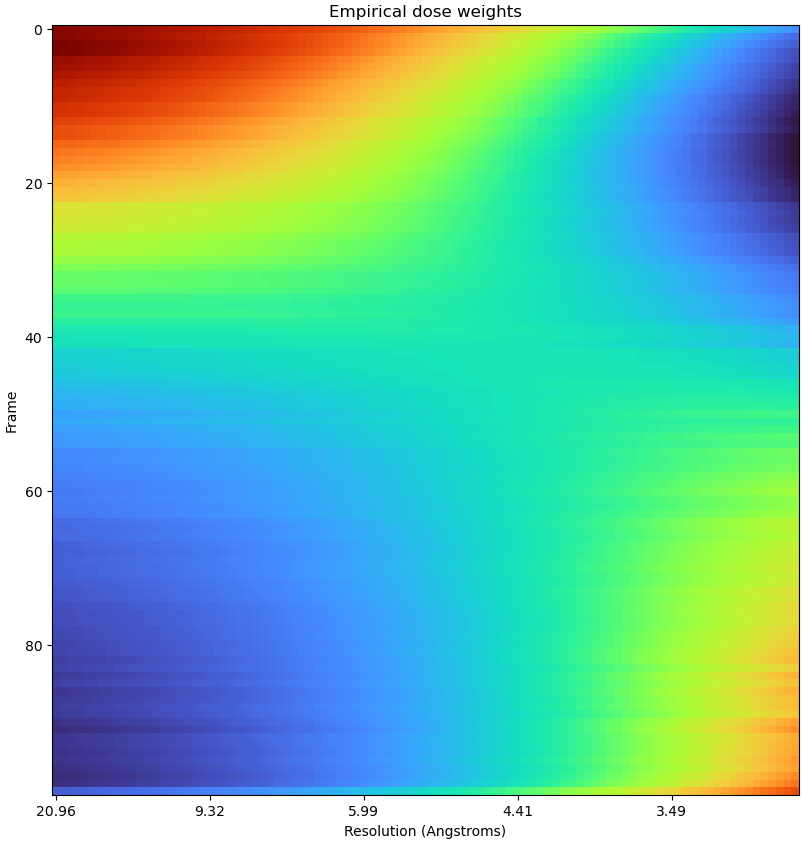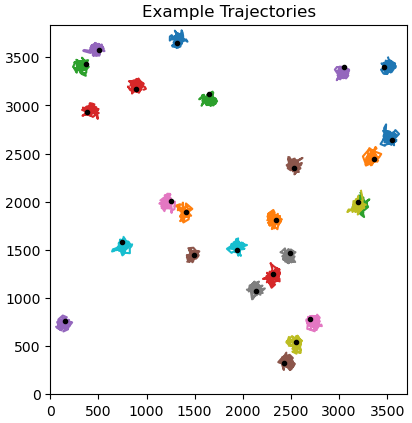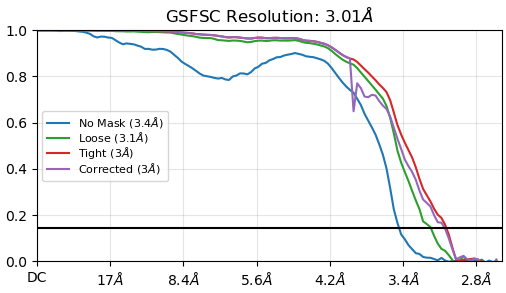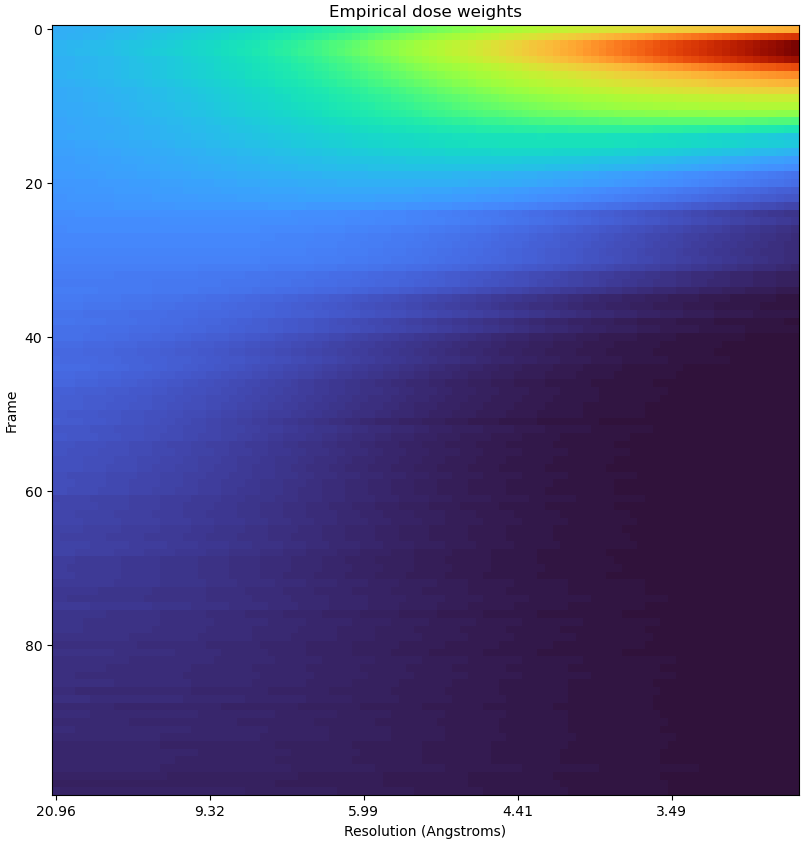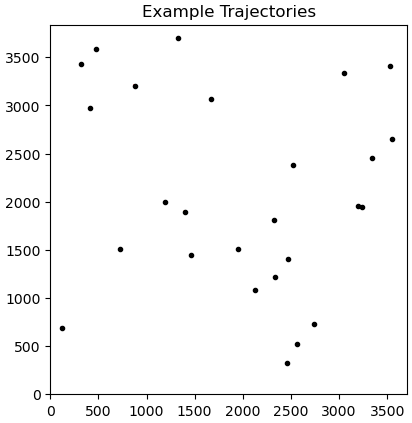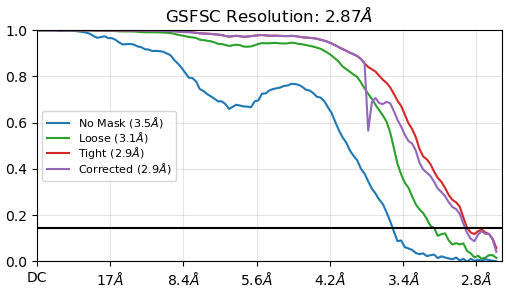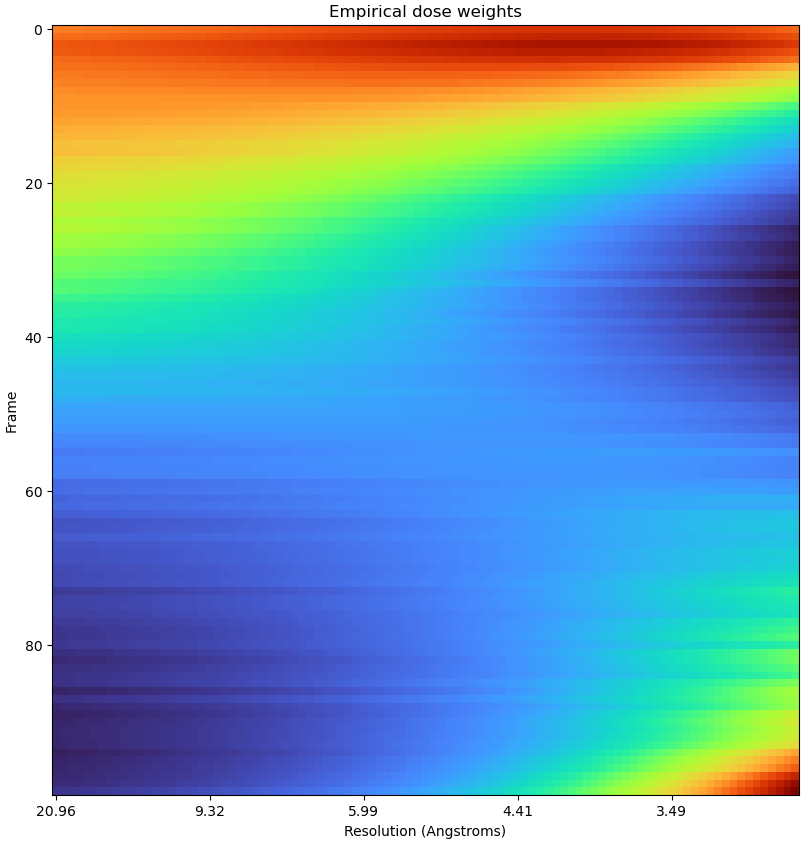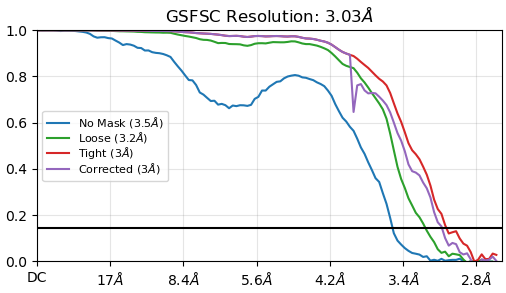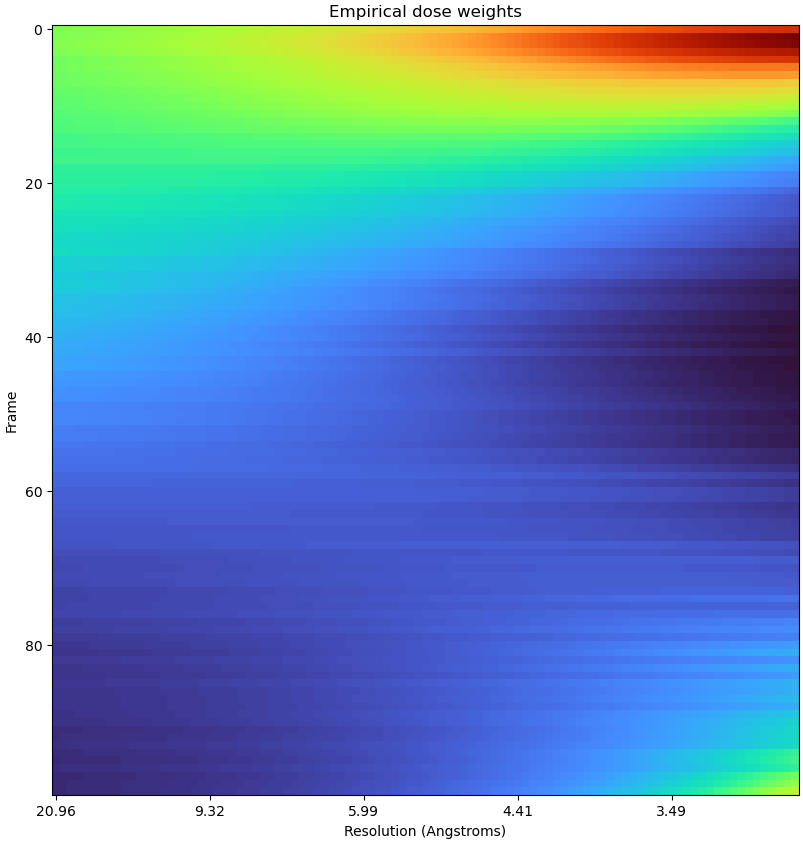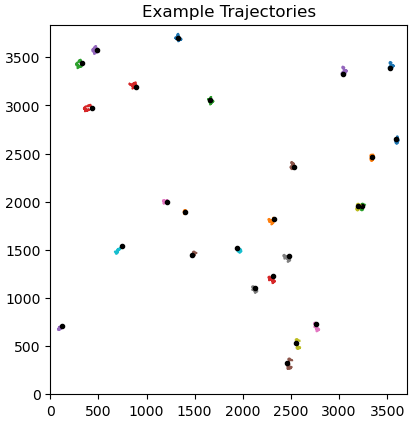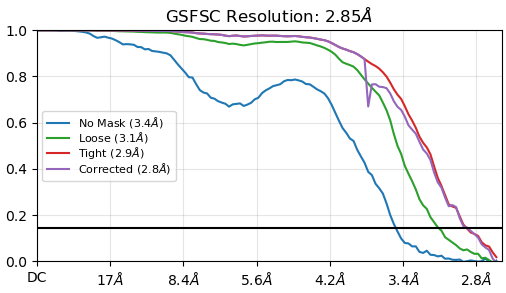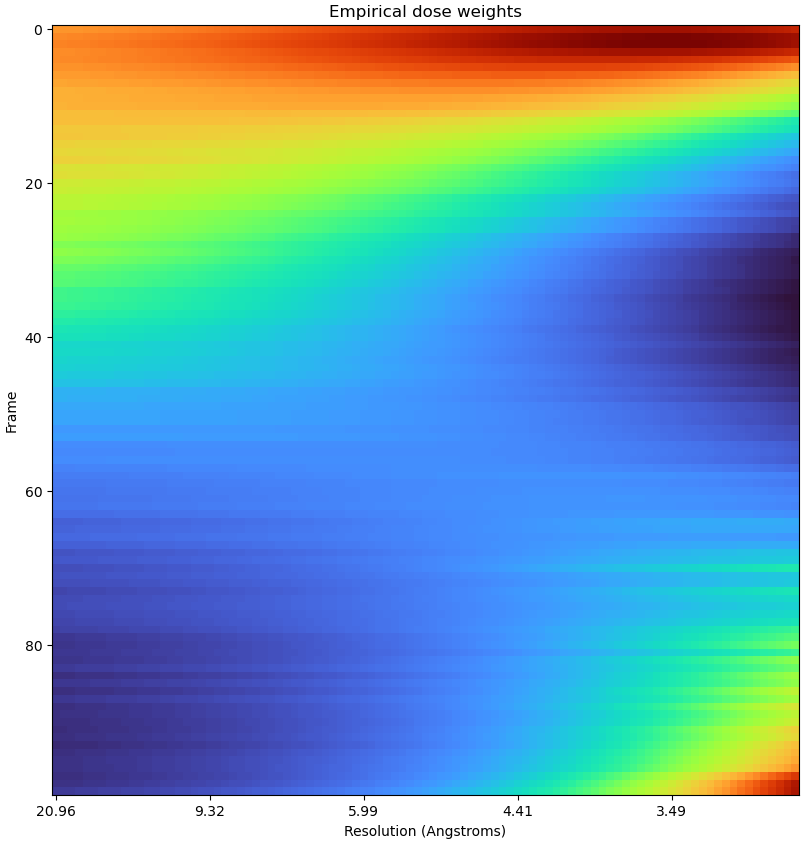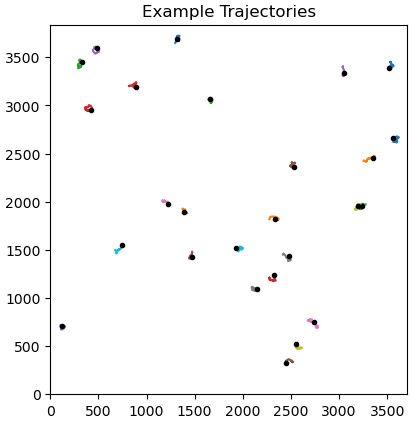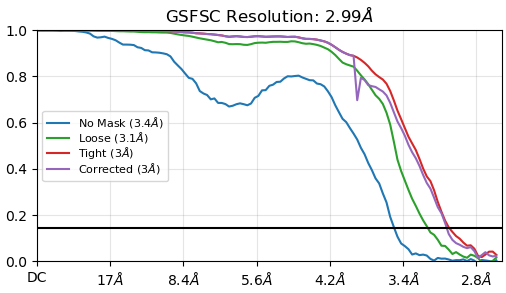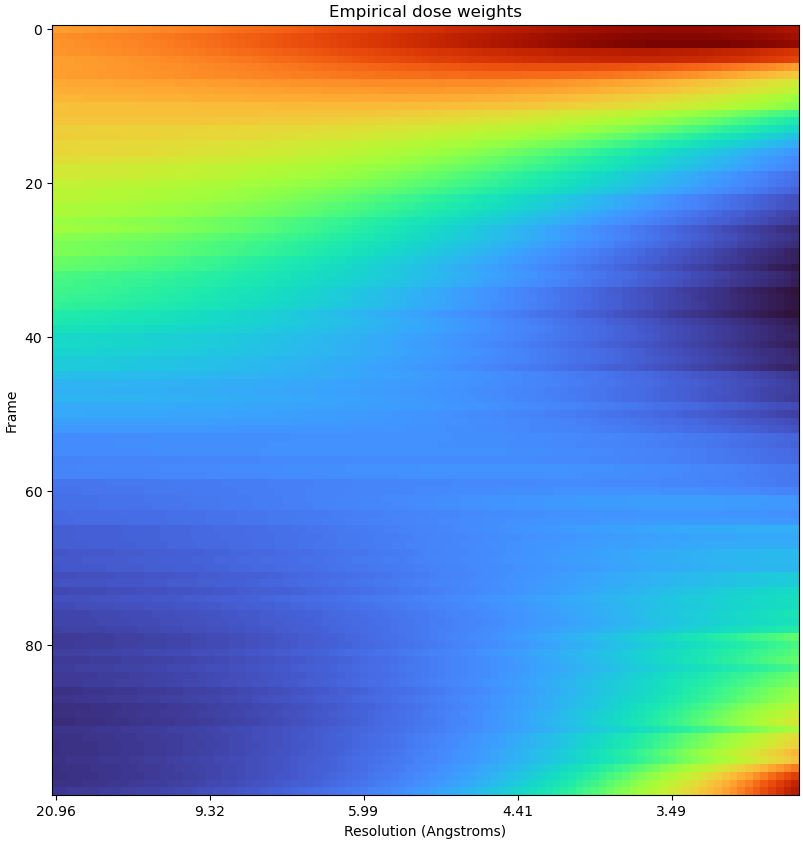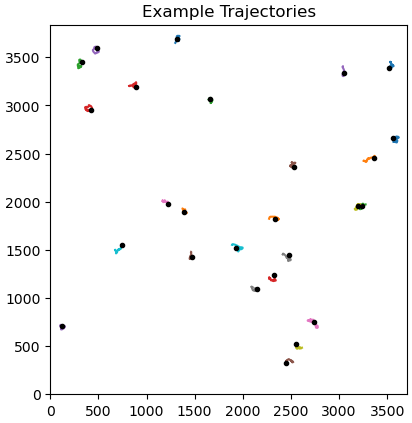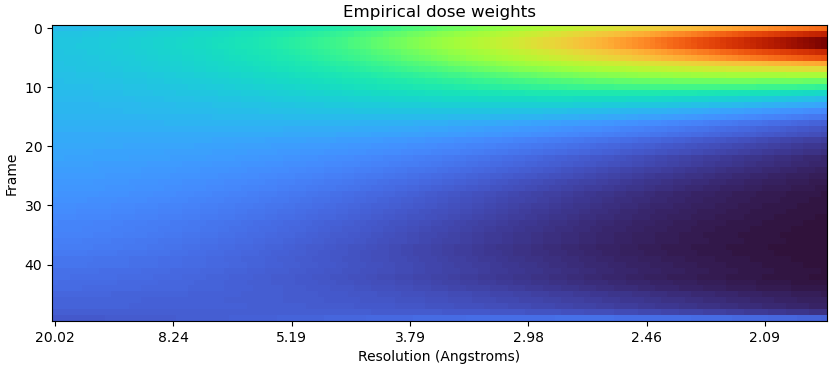Interesting. Here’s some quick (brute force, order of magnitude) results from our in-house apoferritin tutorial dataset (which I keep meaning to upload to EMPIAR…) used because it reliably achieves <2 Ang from 30 micrographs. RBMC calculation is fitting to 2.06 Ang (could be better but doing this quickly)…
Dataset is 41 frames, 50 e-/A^2 total dose. Originally EER but converted to TIFF for tutorials. Can achieve 1.8 Ang with NU refine and better optimisation of CTF parameters.
ORIGINAL FSC: (pre-RBMC)
Calculated hyperparameters (extensive search from full particle stack; 3,115 particles):
Spatial prior strength: 1.1985e-02
Spatial correlation distance: 3000
Acceleration prior strength: 4.2394e-03
Dose weights with passthrough of these parameters:
Note the penultimate frame overweighting.
Dose weights with manual input of these parameters: (sanity/consistency check)
Visually identical.
SPATIAL PRIOR STRENGTH
Spatial prior strength 10x increase:
Significant overweighting of penultimate and ultimate frame, appreciable overweighting from approximately frame 32.
Spatial prior strength 10x decrease:
Overweighting gone.
SPATIAL CORRELATION
Spatial correlation distance 10x increase:
Penultimate frame overweight gone.
Spatial correlation distance 10x decrease:
Significant increase in overweighting of penultimate and ultimate frame compared to increasing spatial correlation distance.
ACCELERATION PRIOR
Acceleration prior strength 10x increase:
Effectively unchanged from calculated. Slight overweighting of penultimate and ultimate frames.
Acceleration prior strength 10x decrease:
Significant increase in overweighting of penultimate and ultimate frame compared to increasing acceleration prior.
Particle motion correction currently running, then will run homogeneous refinement to see what final resolution results are. Will update accordingly. Currently appears that weakening spatial prior and strengthening spatial correlation might have the most positive impact on overweighting of late frames. Strengthening acceleration prior might also have a positive impact (or, at least, no negative impact). Let’s see the resolution results…
…
edit:
MOTION CORRECTION
Here’s the motion tracks for the first micrograph in each parameter set.
Dose weights with manual input of these parameters: (sanity/consistency check)
Spatial prior strength 10x increase:
Spatial prior strength 10x decrease:
Spatial correlation distance 10x increase:
Spatial correlation distance 10x decrease:
Acceleration prior strength 10x increase:
Acceleration prior strength 10x decrease:
Final resolutions:
Dose weights with manual input of these parameters: (sanity/consistency check)
Spatial prior strength 10x increase:
Spatial prior strength 10x decrease:
Spatial correlation distance 10x increase:
Spatial correlation distance 10x decrease:
Acceleration prior strength 10x increase:
Acceleration prior strength 10x decrease:
At least for this small dataset, there is not so big a final effect on resolution, except in decreasing spatial prior strength, if 0.06 Ang is significant.
Might try with a larger dataset as I have time as this appears inconclusive, at least compared to @olibclarke’s 0.2 Ang improvement at ~3 Ang… (or apoferritin is a bad thing to test this with, as it’s generally so robust…!)
